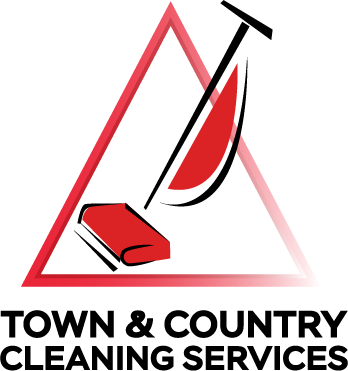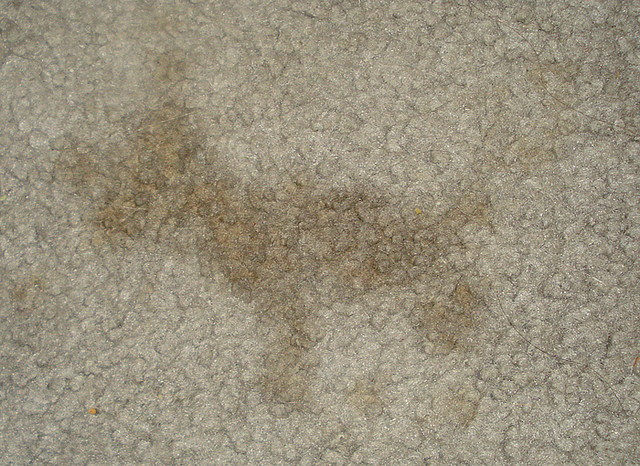“Helpful” Cleaning Tips can mean BAD Advice
No! I actually saw the following recommendation on a television show of “helpful cleaning tips”: to remove pet stains, use ammonia and scrub the spot with a stiff brush until the spot is gone. Two problems: 1) ammonia has such a high pH that it likely will affect the color of the carpet (and will damage nylon fibers) and 2) scrubbing with a stiff brush will cause the carpet fibers to untwist, if not actually wear through them.
Permanent Damage
Once this type of damage has occurred, your carpet cleaning professional cannot correct it by cleaning. The ‘final solution’ is removing the affected area and replacing it with a spare piece (which you may or may not have kept around after the installation – and which may or may not match the appearance of the surrounding older carpet).
Preventing Damage
Professional carpet cleaners do use a brush when cleaning. It’s called a tamping brush. They use it to tamp, not scrub, the spotting solution into the fibers. We do NOT recommend do-it-yourself methods for oriental or hand-made rugs or for upholstered furniture pieces. Those specialty fabrics require special training to spot. As for selecting a spotting solution, find one with the CRI (Carpet and Rug Institute) seal of approval. This lets you know that the product is generally safe for carpet and reasonably effective, but always test in an inconspicuous area first. General spotters are reasonably effective on many spots, but some require more specialized treatment. One more thing–using a spotter with a built-in protectant like Scotchguard or Teflon is fine IF it pulls the spot, but if it fails to fully remove the spot, it leaves a coat of protectant over the spot making it harder for your professional carpet cleaner to remove it after you give up.
Make Us Your Resource
Feel free to ask us for advice when you encounter new or difficult spotting problems. Author Bruce Vance is an IICRC-certified Master Textile Cleaner; Sarah Vance is certified to the Journeyman level. (The IICRC is also known as The CleanTrust and is the premiere certifying-body in the world for the Cleaning and Restoration Industry.) We can help walk you through some non-damaging approaches—no purchase required. Call us at (919) 967-7592.
photo by: justj0000lie


Cleaning the house is one of the most important household chores that we should not forget even for just once a week. This is because our home is the reflection of our personality. The cleaner and fresher our home the cleaner our feelings are. Cleaning our home is not a problem these days because there are many cleaning devices that can be purchased and used for easy cleaning link the vacuum cleaner, duster, and other. We have to give time to clean the place where we live, enjoy, relax, and do our daily tasks. Thank you for sharing this informative article.
It is very difficult for cleaners to clean your carpet if it contains rigid [type of] spots or [is] faded in color, especially after people have brushed them harshly or used high pH solvents. There is no real option for them but to replace the carpet with a new one because a patch filling effort can simply make the carpet look odd. A professional cleaner should have knowledge about solutions that do not harm the color and quality of carpet and can clean it toward its original appearance. I would like to have your assistance on what should we do to recognize the solutions according to the type of spot on carpets.
Customers often are amazed when they see the array of spotters we routinely carry in our spotting kit. The professional carpet cleaner, through training and experience, knows the order to begin when attempting to work on an “unknown” spot – we often begin with a fast-evaporating spray solvent and we observe carefully which solvent begins to “work” on transferring color or substance to a clean white spotting towel. There are spotters in specific pH ranges that are permissible for sensitive, natural materials such as wool, cotton or silk, while there are others which are best saved for the relatively indestructible polypropylene fibers. Some spots are really stains; these are often spots caused by acidic liquids which have occupied open dye sites on the actual fibers, acting much like the dyes used by the original manufacturer. Stains like these frequently occur from coffee (especially HOT decaf spills) and from children’s red juice drinks. There are specific and sometimes unique spotting solutions for such situations but even the best professional cannot remove every spot every time. We prefer to say “if anyone can get this out, we can”.
Sarah
Thanks for saving the day with your helpful advice. I could have seen myself over scrubbing on a spot and ruining our wool carpet… I really want this rug to last a long time. I am going to follow your tips moving forward. Do you have any special advice for owners of wool rugs?
Bill
Hi Bill – thanks for the comment. There are special “rules” for cleaning wool rugs. They are often more expensive and sometimes hand-woven. We highly recommend using a qualified professional carpet and rug cleaner due to the complexity of the material. I notice you are located in New York, let me know if you would like a referral for a local provider. If you do want to spot yourself be sure to keep the pH under 8.0 or 8.5.
Prevention is really better than cure. It’s better to take care not to spill anything on the carpets. Thanks for this useful article.